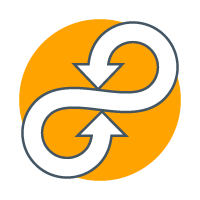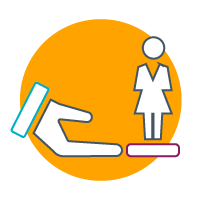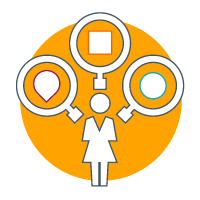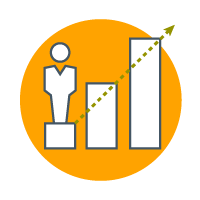"Sheffield has a proven track record of helping New Zealand organisations create best practice learning journeys. Contact us today to learn more about how we can help you achieve your learning goals." - Steffan Brunner, Associate Director and Leadership Development Practice Lead
The traditional approach to learning journeys over the course of a predefined time is no longer cutting it. But, we know that learning journeys must be comprehensive and continuous over the course of a career and flexibly fit ever-changing leadership challenges.
It’s beneficial to invest in learning journeys because this approach to development ensures tight alignment with your organisation’s strategies. Your leaders develop skills that are linked to your business needs, which has bottom-line implications.
Additionally, implementing effective learning journeys can help companies engage and retain talent. Recent research from McKinsey shows that the top reason employees quit over the last year was because they lacked career development and advancement opportunities.
Finally, effective learning journeys benefit leaders themselves. Simply put, when done right, learning journeys create better and more skilled leaders. And if you use blended learning strategies with group-based development or collaborative peer learning, leaders get the chance to network and build stronger relationships.
In this article, we discuss why it’s important to measure results, gain stakeholder engagement to help you support your learning program and create a communication strategy to get everyone excited about their learning journey.

Effective Learning Journeys Are Continuous
The traditional way of thinking about a learning journey is linear and pre-planned from the start. But what we know after years of developing leaders is that the most effective learning experiences are continuous as the learner gains new skills and discovers new areas they need to develop.
Learning journeys today evolve and adapt without a short-term end date. There may be an intentional starting approach, for example, a journey to upskill leaders in leading their teams in a hybrid workplace. The bulk of that learning may occur over a specific time frame, but there are also interactive self-guided tools built in to sustain learning long after.
In addition, a journey like this includes flexibility to start and stop depending on what a leader may have going on, and the capability to choose a learning style that fits their needs. Learning journeys like this are continuous to address all the moments of need across a leader’s career—both expected and unexpected moments. For example, learning journeys support a leader in their transition from an operational leader to a strategic senior-level role. But when there’s an unexpected major shift in the business like a merger, their journey helps them learn the new core skills to succeed in their company’s new landscape.
This next best practice for how to create a learning journey covers why it’s so important for leaders to choose the modality that fits their learning style.

Effective Learning Journeys Are Blended
We know from decades of surveying and talking with leaders that they prefer learning using a blend of modalities. This includes a mix of classroom learning with self-directed options and development assignments. We say that the magic is truly in the mix of modalities that work best for your leaders.
Plus, one thing we know as experts in learning and development is that people learn better when there’s variety in their learning journey. This variety keeps leaders’ engagement high and helps them make continuous new connections to concepts.
So what does variety of learning modalities mean? It means leaders have options to choose between virtual, in-person, or self-paced learning courses. Organisations can also offer microcourses, self-insight tools and assessments, games, simulations, and other digital tools to help leaders practice new skills on demand.
Offering a variety of digital and in-person learning experiences helps L&D professionals meet leaders in their moment of need. Meeting leaders in the moment means providing content and tools on a specific topic, challenge, or skill they need.

Effective Learning Journeys Are Supported by Senior Leaders
When senior leaders understand the value of your program, they can also communicate and champion it to employees, making learners more likely to participate.
Having senior leaders as stakeholders who back your program can make all the difference. They can help ensure that your program is connected to your business strategy. And the more buy-in you have from the top, the more your program will be socialised within the organisation. When it’s time for investment decisions about your program, senior leaders are more likely to feel ownership for current success. This can lead to more budget coming your way for expansion and improvements. It’s also important to consider support where it matters most for your learners: their own managers should support their learning journey and development.

Effective Learning Journeys Are Personalised
Why does personalisation make a difference for learners? When development is personalised, it feels relevant. Personalised development is relevant because it's also anchored on your business context. Leaders want to connect how their development will drive success for themselves as well as for the organization.
But personalising a learning journey must be grounded in self-insight and data. Leadership assessments can provide leaders with data on their strengths and gaps. This data can be used to influence and bring focus to a leader’s learning journey—both at the individual and group level.
When it comes to personalised learning journeys, make sure that if it’s not completely evident to your leaders that it is personalised, you directly communicate it as such. I’ve seen leaders respond well to a message like, "This is personalised for you, and here's how we did that." Communicating that your programs are personalised can help with adoption. It can also create excitement for leaders to get started on development that was built especially for them!

Effective Learning Journeys Are Data Driven
Being data driven allows learning journeys to be more flexible and adaptable, which is important in our ever-changing business landscape. Using data can help you pivot quickly and shift a learning journey to respond to major organisational changes. For example, self-assessment data from a company’s leaders who have recently completed a merger can show skill gaps in a newly formed group of leaders.
It’s also important to collect data at different points of your program to help you understand what’s working and what’s not. Knowing what’s effective can help you adjust the learning journey along the way according to the changing goals and needs of the learner—and your organisation.
For example, measurement tools can be used to evaluate the program’s impact on your leader’s reactions, learning, and behaviour change, and on organisation-level metrics. Having data readily available on the impact of your leadership programs can help you highlight their success. And being able to prove the worth of your program can be crucial to sustaining your program (and your job as an L&D professional!) during disruptive times when budgets are under more scrutiny.
But more than that, being able to connect organisation-level metrics to your leadership program metrics can help you see how the quality of leadership truly impacts company performance.
Get in touch with the Sheffield team
Read the full article here